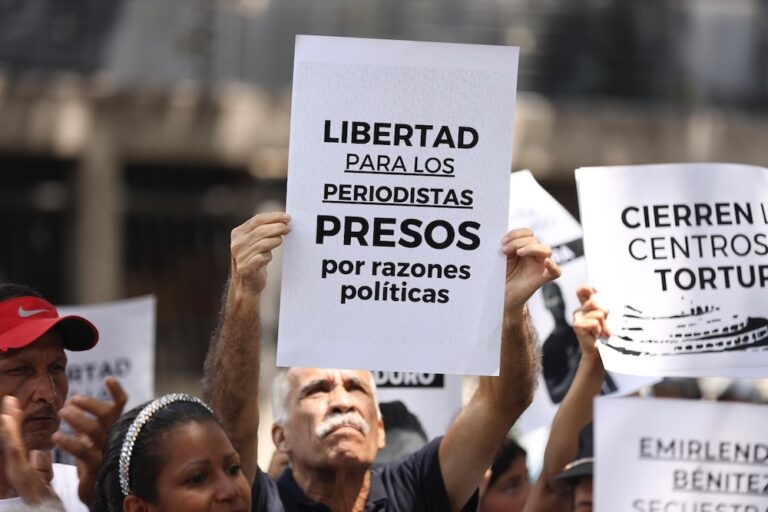The decisions IFEX members make and the challenges they face when documenting journalists' fatalities.
Countless journalists around the world risk their lives to cover conflict zones, and raise the ire of powerful groups by reporting on controversial subjects. Sometimes they pay the ultimate price, losing their lives to bring us the story.
Free expression advocates play an important “witnessing” role by documenting and spotlighting these incidents. At the end of each calendar year, many IFEX members publish their annual tallies of attacks on media professionals, usually focusing on the number of journalists who were killed in connection with their work.
Five IFEX members track global tallies of journalists killed, often with marked differences in the final counts – and 2012 was no exception.
IFEX lays out the main reasons for the variations.
Who’s included – and not included – in the tallies
Not all groups include citizen journalists, bloggers or media support staff in their tallies of journalists killed – and even when they do, it’s not always clear who should be included in each category.
While most groups include online journalists, there is no consensus on when a blogger should be counted as an online journalist, for example. As Alison Meston, press freedom director of the World Association of Newspapers and News Publishers (WAN-IFRA), explained, “We might not include a blogger who is an activist on a particular community issue, but we might include a blogger who is a reputable news source and has many followers or who appears regularly in a newspaper or news organisation.”
Some groups have developed definitions and applied them in their reports to adapt to the changing reality of journalism. For example, in 2012 the International Press Institute’s (IPI) Death Watch included Syrian citizen journalists, defined as individuals who do not work for a government-owned or government-controlled media outlet in Syria, but who apply the principles of journalism in collecting and disseminating information.
Previously the war in Iraq brought to the fore the toll on local individuals who were targeted while acting as assistants or fixers for foreign correspondents. As a result, the International Federation of Journalists (IFJ) started including media support staff in their count in 2003, and the Committee to Protect Journalists (CPJ) and Reporters Without Borders (RSF) created a new category to track deaths of media support workers separately.
How unconfirmed cases are handled
CPJ and RSF will not include a case unless it has been definitively confirmed that the individual killed was targeted for his or her work. This can be particularly challenging in countries where impunity reigns and proper legal investigations are lacking. Other members choose to include such cases as long as a free expression link has not been ruled out.
While this results in different tallies and may prevent some groups from working together to lobby governments, the different approaches have distinct advantages. CPJ says that they choose to exclude unconfirmed cases in their final tally to avoid giving an erroneous impression of the severity of the situation, instead counting them separately. IFJ and IPI, which include unconfirmed cases, say that this permits them to put pressure on the authorities, so that a murder is not dismissed as “personally-motivated” without sufficient evidence. It also increases the likelihood that a proper debate about the motive can emerge.
The circumstances of a journalist’s death
Beyond variations in counting individuals who have been killed, there are also differences in whether IFEX members include deaths of journalists who die in combat or while on a dangerous assignment, as opposed to accidental deaths or deaths from natural causes. For example, IFJ and IPI include cases of journalists killed while on a dangerous assignment even if they were not on duty at the time of their death. RSF does not, whereas CPJ and WAN-IFRA consider the circumstances in each case.
Sources and resources
The above are all examples of conscious decisions groups take about who will be included in their tallies. But variations can also result from factors outside of their control. For example, there tends to be more discrepancies in countries where there is little information due to repression, fear and self-censorship, as exemplified by the situation in Mexico in recent years. A group may not have the resources to fully investigate the motive for each and every murder. And finally, the accuracy of the final tallies necessarily depends on the reliability and availability of the groups’ sources in a particular region. IFJ and WAN-IFRA say it’s easier to ascertain the facts and confirm the motive in countries where they have local affiliates or associations.
For the reasons listed above, the numbers are necessarily approximate. Some cases never come to light. In other cases it is near impossible to establish the exact circumstances of the individual’s death. Nevertheless, IFEX members feel that despite the differences, the tallies are an important tool to help identify trends, highlight dangers in specific regions and draw attention to the responsibilities of the state.
For further analysis of the IFEX members’ methodology, as well as case studies on Mexico, the Philippines and Russia, download the full report Journalists Killed Research (December 2011).
Marianna Tzabiras has been working as a researcher and activist on human rights issues for over 10 years, with an initial focus on Latin America. She has had a long history with IFEX and is currently the Asia & Pacific and Digital Rights Section Editor.



